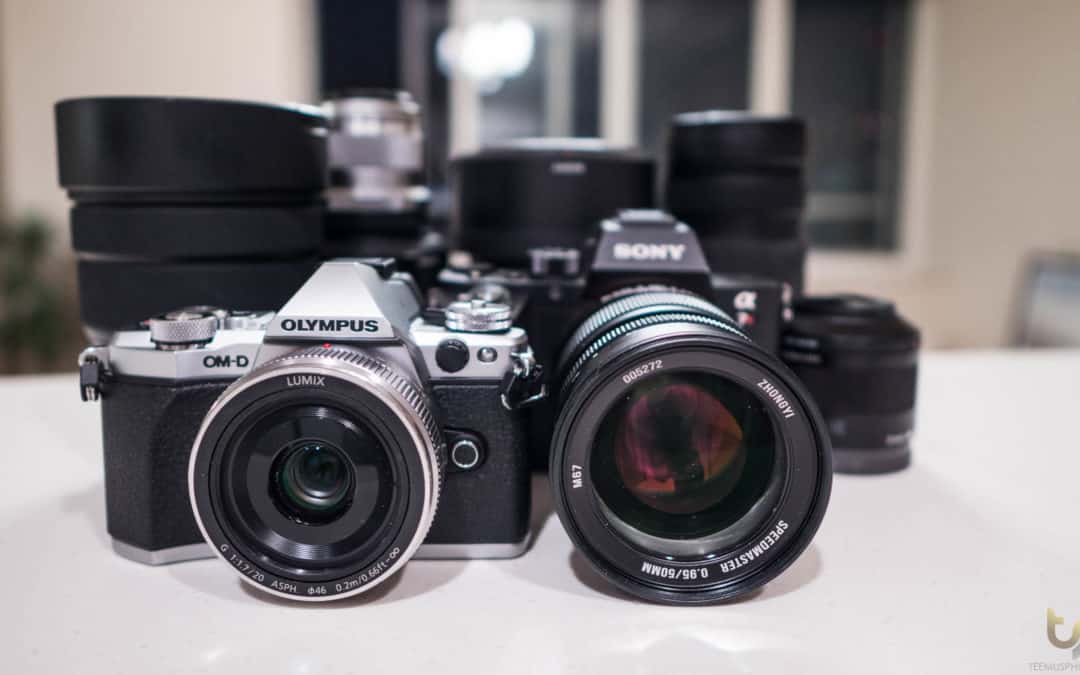Update: For a more up to date gear list, read this.
The question every photographer gets all the time… What camera do you use?
Here’s what I normally answer
“Sony a7r ii! and also Olympus em5.”
You’re welcome…
And here’s what I really want to say:
The long answer is a lot more complicated than that. First of all, why are you asking? Usually, it seems that people who are beginners who are just thinking of picking up photography ask this question, and it is a valid question to ask. But what they don’t usually realize is that, in most cases, it rarely matters. A better question would be, “Which lens did you use?” or “How did you edit this image?”, as both of those things are a lot more important to the end result than the camera body. Especially when an image is viewed through a social media platform on a phone.
As a sidenote, I’ve heard some photographers take this as a condescending question, as if you were dismissing their skill, so be vary of asking it.
But if the camera body doesn’t matter, then how do you decide which one to pick?
So far we’ve established that the lens and editing both have a bigger impact on the final result than the camera body. An entry level Canon will take roughly similar quality photos to an entry level Pentax, Nikon, Sony or Fuji. And if you wish to spend $3000 on a body, it’s difficult to pick a complete dud, no matter the brand or model. So what difference does the camera make? Well, different cameras have different characteristics. First ask yourself, what kind of images do I want to be shooting? How seriously will I be taking this hobby? Will I be traveling, shooting inside, taking videos, or perhaps diving?
The reason I shoot on Sony a7r ii
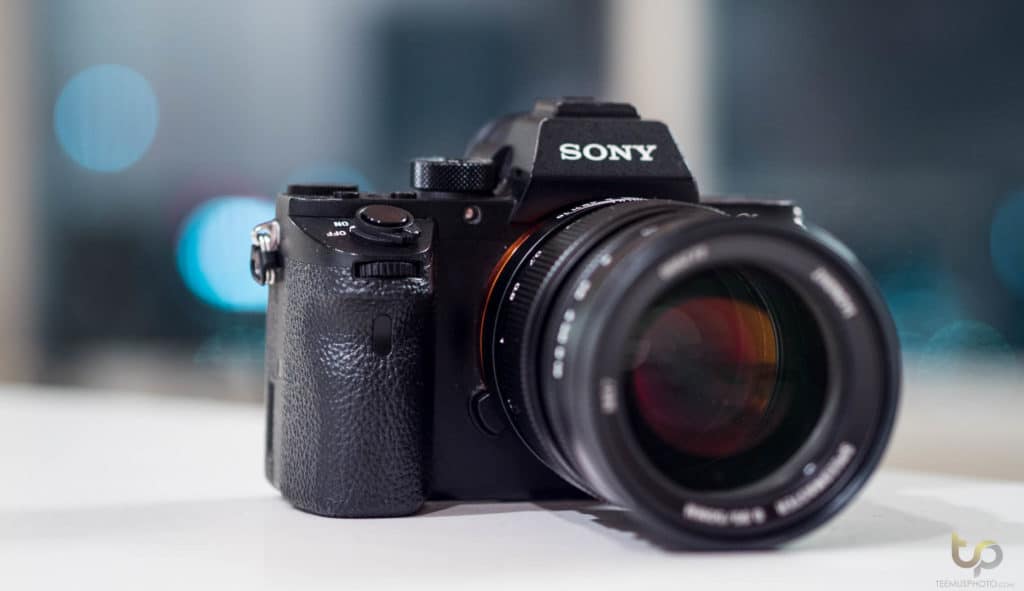
Sony is definitely not the camera for everyone, it has it’s strengths and weaknesses. But generally, the a7 lineup is thought to be an excellent low-weight-low-light full frame camera with decent video capabilities. The clear negatives are bad battery life and clunky software. The a7r ii was thought to be one of the best cameras available at the time I bought it (now it’s last-gen stuff), and it ticked all the boxes I needed. First, I love a light camera, as I travel constantly, and even when not traveling, it simply makes shooting long days a lot easier. Secondly, the Sony has excellent low light capabilities with its efficient full frame sensor, which is ideal since nowadays I shoot almost exclusively at night. Thirdly, the video is fairly good, including video autofocus (after some setting tweaks), which is also awesome since I do a fair amount of video production. And last but not least, it’s the only small mirrorless camera that has a full frame sensor, which gives me that delicious Bokeh. There’s a Leica full frame mirrorless, but that thing is huge in both size and price, so it isn’t a real competitor.
Battery life is a small annoyance for this camera, although that is reportedly fixed with the newer a9 and a III models. But why wouldn’t you want this camera?
First of all, if you don’t particularly need low light performance, or video, or the small size, you would be paying extra price for nothing. Some people simply prefer a bigger DSLR camera, especially those guys with huge hands. In addition, Sony lenses are still much pricier than equivalents from Canon and Nikon, so the system has additional hidden costs associated that you don’t necessarily see coming when you first make the purchase. And some people simply can’t stand Sony’s messy menus or badly designed software. Astrophotographers have had issues with Sony’s noise reduction/compression deleting some stars (Google Sony star eating issues). And very serious action videographers might not be happy with the rolling shutter, which is apparent when panning quickly during video shooting.
The reason I shoot Olympus em5
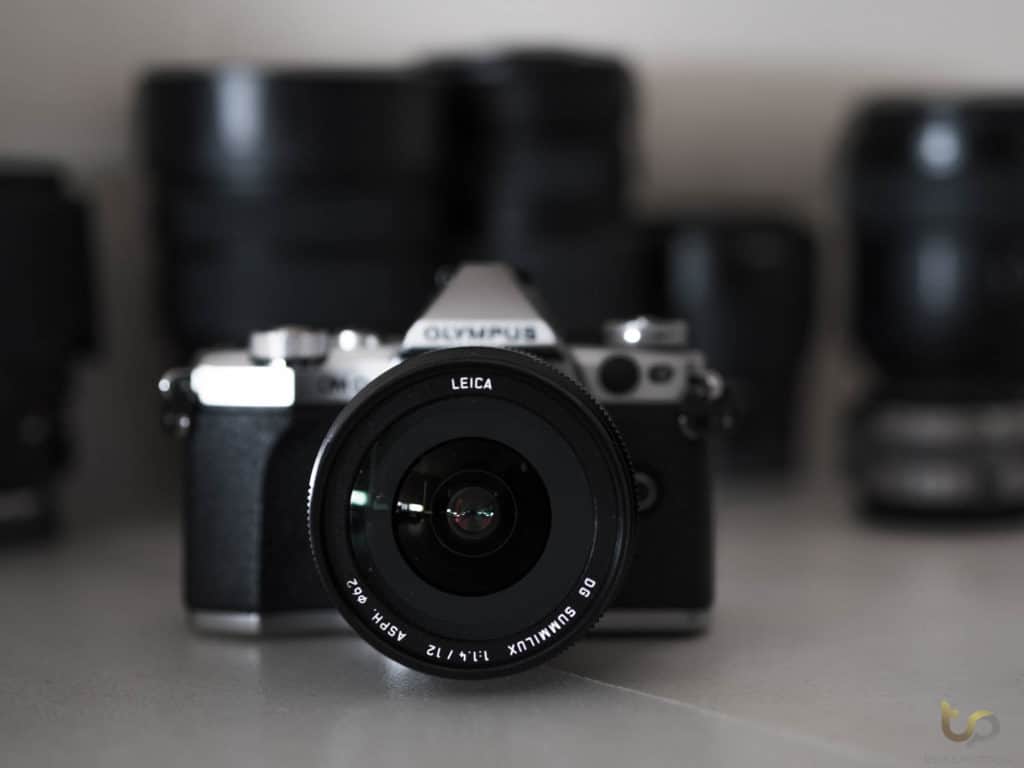
Short answer, it’s tiny and pretty, and has a couple of very useful features, such as weather-sealing, amazing stabilization, and a built in timelapse app.
My first camera was an omd em-10, but I accidentally gave it a shower and now it is barely functional. I swapped to a Panny GX8, but later went back to Olympus. Why? Well, while Panasonic gx8 has decent video, but it’s a bit too big considering the sensor size and has pretty bad stills photo performance. It’s also annoying to use, I could never get used to the ergonomics, and it has too many buttons that can’t be disabled. These are problems that surfaced later, I apologize as I haven’t had time to update the review linked above – my initial impressions of the camera were quite good. Olympus’ video sucks quite bad, but that’s ok since I already have the Sony for video duties, and this serves as my second camera. What is great though is that the Olympus, with it’s smaller sensor, is even tinier than the Sony – especially with longer lenses, so when I need to give my back a rest and can’t carry much of anything, this is what I pack. Or when I need to save even more weight on a rarer landscape photography hike mission, or perhaps a rooftop climb. Or, when I simply need two cameras. Also, the image stabilization is so amazing that coupled with a prime lens, a tripod is rarely necessary. And if I do need to bring one, the weight of the camera allows me to use a smaller gorillapod than normal.
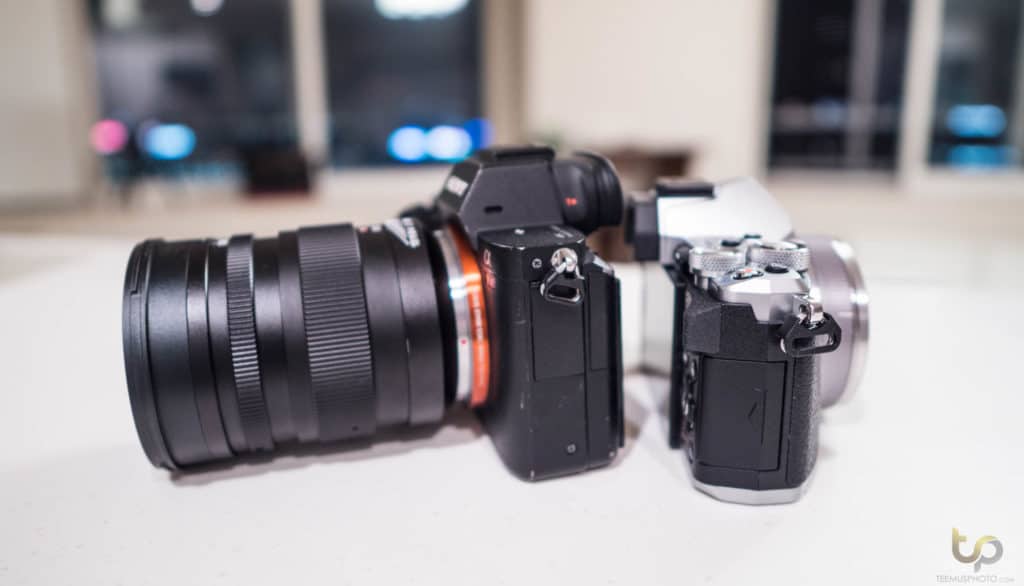
The Sony isn’t huge, but the em5 is nearly pocketable.
Basically, it’s a great minimalistic camera that has decent enough image performance and a great lens selection.
But also it’s almost too small to use comfortably for longer periods and you can’t anyway, unless you bring extra batteries. And while it has a flipout screen and a mic jack, the video quality isn’t really good enough for serious work. For vlogging it is acceptable, for timelapses it is great.
Some suitable beginner cameras to consider
So again, there are a lot of choices and it’s difficult to make a wrong decision, as long as you are buying a modern interchangeable lens camera from a known manufacturer. But nevertheless I’ve listed a couple of suitable first cameras for the beginner, in addition to the two I listed above already.
- A budget DSLR Powerhouse for the serious newbie
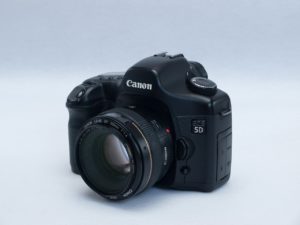 Canon 5d ii or newer. This is a serious DSLR with a full frame sensor that is a bit outdated, but still produces amazing photographs. If you want a powerful camera with good performance or want a cheap full frame sensor, look for a used 5d. Even if you upgrade to a more modern body, you will still be in the Canon ecosystem, meaning you won’t have to sell your lenses. However, if you were to start with a crop sensor camera, you’d have to replace your lenses if you were to upgrade, regardless of using the same brand.
Canon 5d ii or newer. This is a serious DSLR with a full frame sensor that is a bit outdated, but still produces amazing photographs. If you want a powerful camera with good performance or want a cheap full frame sensor, look for a used 5d. Even if you upgrade to a more modern body, you will still be in the Canon ecosystem, meaning you won’t have to sell your lenses. However, if you were to start with a crop sensor camera, you’d have to replace your lenses if you were to upgrade, regardless of using the same brand.
Good for those who plan to shoot portraits, fine art, sports. Decent for everything else except quite bad for video. Oh and make sure you pick up a nifty fifty 50mm f1.8 lens – it’s dirt cheap for the performance it offers and amazing for just about any type of photography. This is probably my number one recommendation for those who have a more serious interest in photography but don’t want to spend more than $600-$900. You can check amazon for second hand Canon 5ds here.
- A minimalistic travel camera for beginners
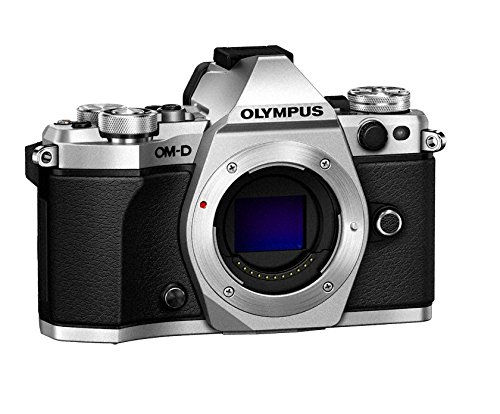 Olympus em10 mark iii is the latest entry level model from Olympus. It’s an alternative to the em5 that I own. However, it is 3 years younger and only twice the price. It does not have weather sealing and the stabilization isn’t quite as good, but otherwise this camera tends to beat or match the em5 ii, which is not bad considering the price difference. With Olympus you will get performance and portability mixed with style.
Olympus em10 mark iii is the latest entry level model from Olympus. It’s an alternative to the em5 that I own. However, it is 3 years younger and only twice the price. It does not have weather sealing and the stabilization isn’t quite as good, but otherwise this camera tends to beat or match the em5 ii, which is not bad considering the price difference. With Olympus you will get performance and portability mixed with style.
Good for those who will be traveling or walking around with their camera all day, or those who want to remain stealthy while shooting streets.
- A video focused mirrorless
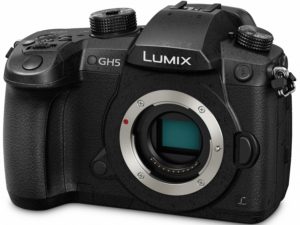 Coming in a bit pricier but well worth the money, if you are a video focused beginner interested in shooting short film or vlogs, it may be worth considering the Panasonic GH5. For a tighter budget but the same mount, it may also be worth considering a second-hand GH4. These are excellent video-focused cameras that are not lacking for still photography either – great all around workhorses. However, the body is huge but the sensor is quite small, which means that you lose depth of field capability, low light performance and resolution while gaining none of the size benefits of the micro four-thirds format.
Coming in a bit pricier but well worth the money, if you are a video focused beginner interested in shooting short film or vlogs, it may be worth considering the Panasonic GH5. For a tighter budget but the same mount, it may also be worth considering a second-hand GH4. These are excellent video-focused cameras that are not lacking for still photography either – great all around workhorses. However, the body is huge but the sensor is quite small, which means that you lose depth of field capability, low light performance and resolution while gaining none of the size benefits of the micro four-thirds format.
- The fashion statement
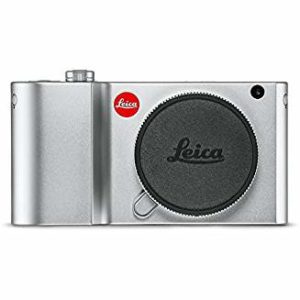 You might have heard of Leica, the Macintosh of the camera world. The Leica TL is a beautiful small mirrorless camera that could be great for any beginner or semi-serious shooter. It comes with a higher price tag and lower pure specs than most its competitors, but it makes that up in style, feel and tradition. If the higher price doesn’t care you, this is a well designed camera that is surely a joy to shoot with.
You might have heard of Leica, the Macintosh of the camera world. The Leica TL is a beautiful small mirrorless camera that could be great for any beginner or semi-serious shooter. It comes with a higher price tag and lower pure specs than most its competitors, but it makes that up in style, feel and tradition. If the higher price doesn’t care you, this is a well designed camera that is surely a joy to shoot with.
In conclusion
These are just a few, frankly fairly random examples of great cameras that I would recommend for beginners. I didn’t list Nikons or Fujis simply because I have less knowledge and personal experience shooting those cameras. It doesn’t mean they’re not good options. I think the first step is to buy any camera as soon as possible, and then head to the field and start shooting. As you develop as a photographer, you will then have a better idea of what exactly you want in a camera. Good thins is that most cameras retain their value fairly well, especially when compared to other tech like phones for example. So just pick something and start shooting already!
If you still have doubts about which camera might be best for you, don’t hesitate to ask in the comments below. Please tell me what you will be shooting with as much detail as you can, and I will attempt to give you a personalized recommendation!
